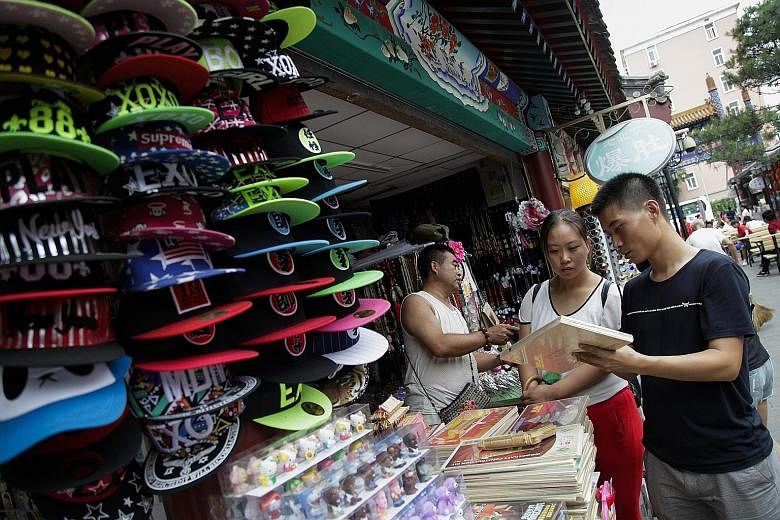Plunging commodity and oil prices, China's economic slowdown and Indonesia's sliding share market have combined to hammer the 30 blue chips that make up the Straits Times Index (STI).
The STI comprises 30 stocks from five sectors - consumer discretionary, consumer staples, financials, industrials and telecommunication. They have fallen 8.7 per cent on average this year and are down 7.6 per cent from 12 months ago. Factor in dividends and the average return was minus 6.6 per cent as on Tuesday.
The 10 best performers have averaged a price gain of about 4.5 per cent this year and dividend-boosted returns of 6.8 per cent.
Their average one-year gain has been about 14.3 per cent and 49.6 per cent over three years.
The five best performers this year are Hongkong Land Holdings, ComfortDelGro Corp, Thai Beverage Public Company, Singapore Telecommunications and CapitaLand Mall Trust.
Mr Geoff Howie, market strategist at the Singapore Exchange, told The Straits Times: "In the three years to mid-2015, stocks making up the Straits Times Index achieved an average 22 per cent price gain. Even with the average 5 per cent decline of STI component stocks in the past five weeks since then, these stocks rose an average 17 per cent from mid-2012.
"What is notable is that the most recent decline in STI stocks is uneven. The worst-hit stocks were commodity-related, including Golden Agri-Resources, Jardine Cycle & Carriage, Noble Group, Sembcorp Industries and Sembcorp Marine, which have been influenced by external headwinds.
"The Bloomberg Commodity Index fell 11 per cent in the five weeks since end-June. In addition, a number of the recent STI decliners have large exposure to Indonesia, whose stock market has been the weakest in the region this year," he said.
The 30 STI stocks account for about 66 per cent of stock market turnover and 53.3 per cent of total market capitalisation.
The STI is also widely used as the basis of financial products, including exchange-traded funds (ETFs), which may be an affordable way for retail investors to invest in the top 30 blue chips.
The SPDR STI ETF and the Nikko AM STI ETF are considered excluded investment products. so they can be bought by investors without having to complete a customer assessment review.
Like stocks, these two STI ETFs also pay dividends. The SPDR STI ETF averaged a 5.6 per cent price decline in the year to date with a 4.8 cent dividend per unit in January and a 4.9 cent dividend per unit last month. Its total return over the past five years was up 22.5 per cent.
The Nikko fund has averaged a 5.8 per cent price decline this year with two dividends totalling 9.77 cents per unit, paid in January and last month. Both have a minimum board lot size of 100.
POSB and OCBC offer the Nikko STI ETF fund via their regular savings plan product offerings.
Charges include a sales charge of 1 per cent for the Nikko STI ETF on the amount invested each month. There are no other administration or platform charges involved. There are also no exit or redemption charges though that may be subject to change.
"We've seen an increasing number of customers investing in equities through the OCBC Blue Chip Investment Plan since its launch in 2013," said Ms Tan Siew Lee, head of OCBC wealth management Singapore.
"Total asset under management has grown three times and active accounts grew 28 per cent, from a year ago. Average investment per account also rose 27 per cent over the same period."
But IG market strategist Bernard Aw believes investors should hold off on STI ETFs for now as the index may correct further in the next few months. "Some traders are waiting for the general election to be over, because they aren't sure how it could affect market sentiment. This year's elections are expected to be more hotly contested by the opposition compared to 2011," he said.
Investors keen to find out more about investing in the STI can head to the Invest Fair 2015 on Aug 15 and 16 at Suntec exhibition halls 403 and 404. SGX's Mr Howie will be speaking on the STI and State Street Global Advisors and Nikko Asset Management will speak on ETFs.


